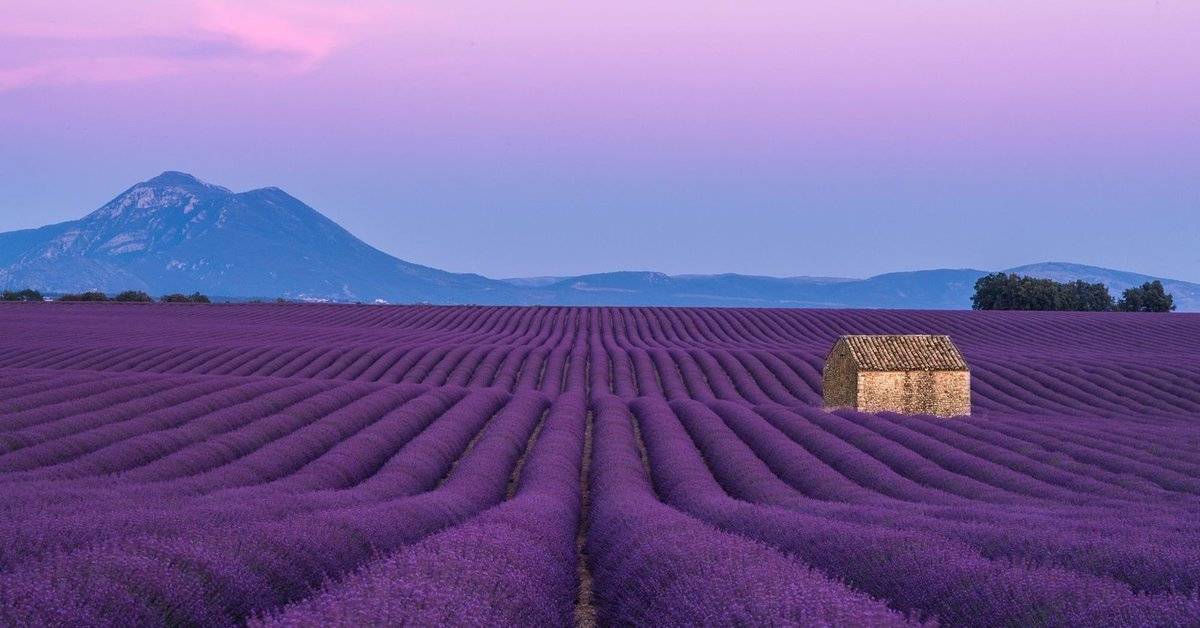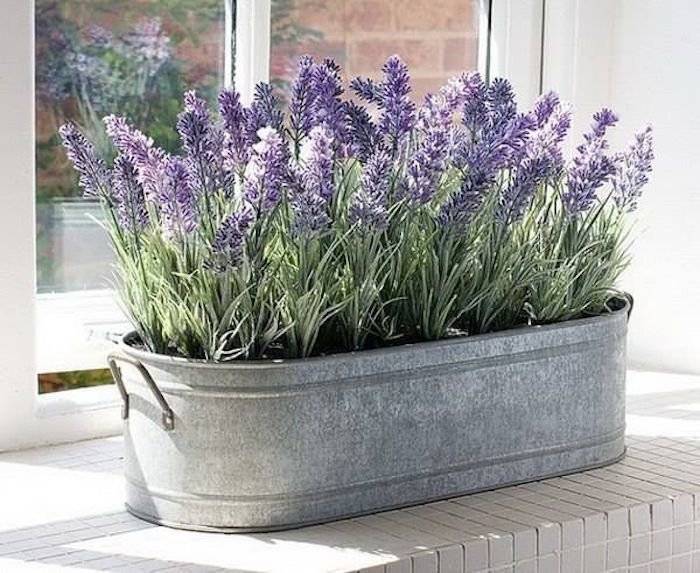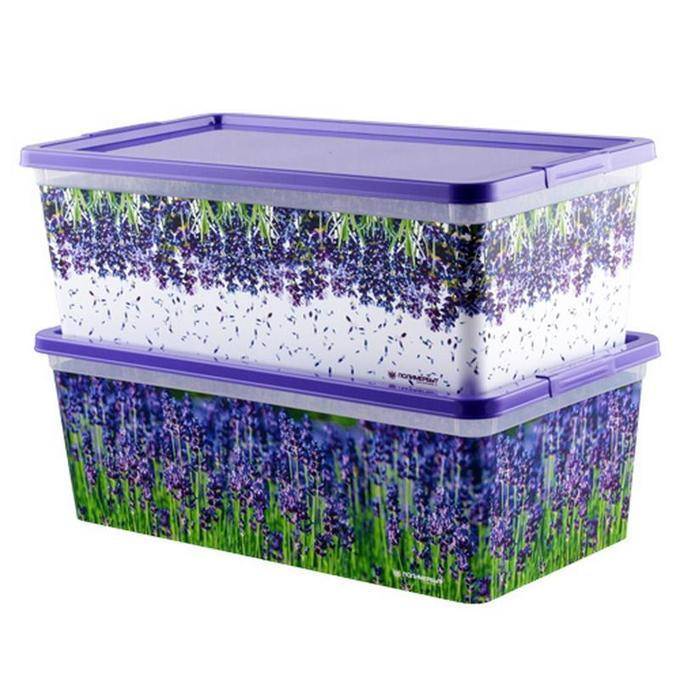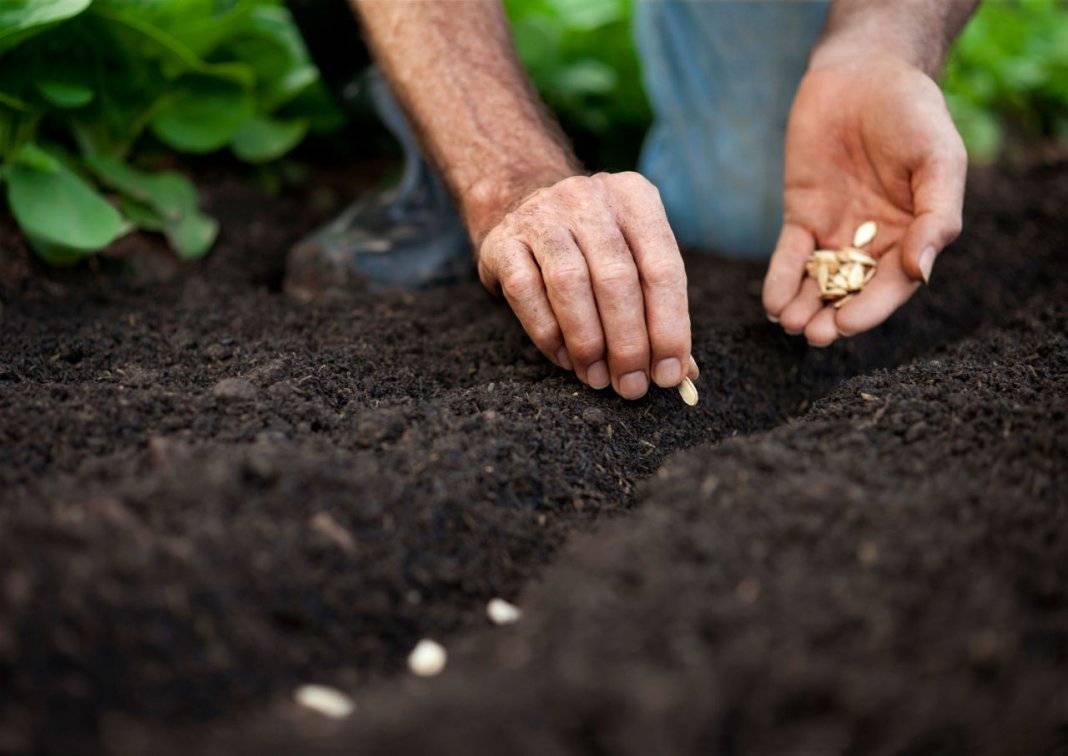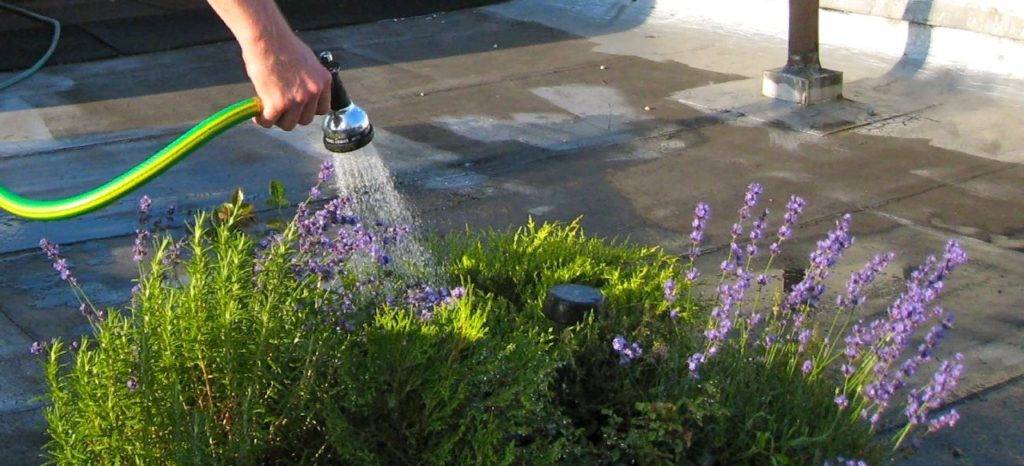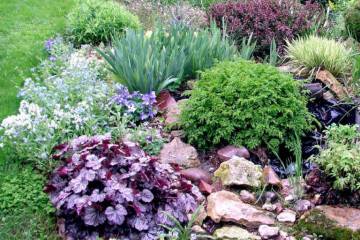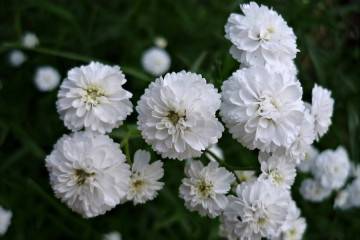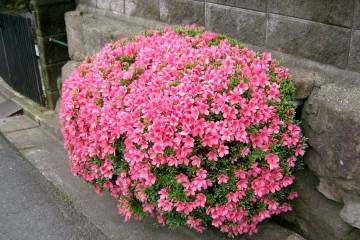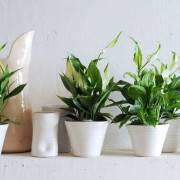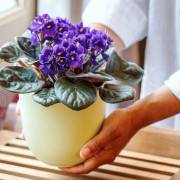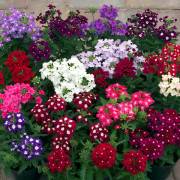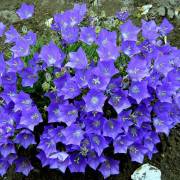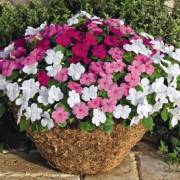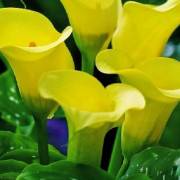Lavender seeds - what seedlings look like
Content:
Its many benefits and aesthetically pleasing appearance have made lavender a popular plant in a wide variety of countries around the world.
Description of culture and application
Lavender is a plant that originated in the mountains. This factor contributed to good endurance. It has a lilac, bluish or pinkish hue, depending on the variety, has medicinal properties and serves as an excellent decoration. Belongs to the shrubs of the labiate family. In France, there are entire plantations on which a huge amount of lavender is grown. And those who had a chance to see such beauty live are trying to grow their own bushes in their summer cottages.
What types of lavender are there
English. The most popular species, particularly in France. Long spikelets with narrow bluish leaves are considered the most beautiful species, while the stem is of medium length. In many countries, (in particular, in Russia), this particular variety is popular due to its resistance to frost. This lavender can be left in the garden in cold weather and not transplanted into pots for overwintering.
The Dutch species was bred from the English, has short inflorescences and wide leaves. Unfortunately, this species did not inherit the ability to winter in low temperatures and it is better to use such lavender as a home pot decoration.
Bandera Pink - blooms only in the field, not in pots. The height of the flowers is up to 25 cm, blooms from July to the end of August. Such a plant can also be planted in those regions where the temperature conditions are harsh. In another way, this variety is called "evergreen" because of the constant flowering and bright green stems.
Richard Gray is a variety of lavender with a high stem and fluffy leaves, about 60 cm high. The difference is the stem is green-silver in color, which may look like hoarfrost. Pleasant aroma and delicate lilac color of the petals.
Silver Mist. Short stems, growing in wildflowers, has a dark blue-violet color with almost white or gray petals. This variety blooms especially beautifully towards the end of August. It is frost-resistant and tolerates frost down to -15 degrees. Therefore, it is allowed to sow in plots in the south of the country.
Platinum Blond. Very compact shrubs up to 40 cm high. They can only survive winter if transplanted into pots or kept in a greenhouse. Pink-blue or lilac color, elongated buds on a long stem.
Useful properties and application in traditional medicine
The plant has many beneficial properties, therefore, it is widely used in folk medicine. Infusions and decoctions are made from lavender, which are taken orally to normalize sleep and emotional state, relieve muscle tension and as a prophylaxis.Such a prophylactic agent helps rid the body of harmful bacteria, normalizes the intestines, has a beneficial effect on the state of internal organs, eliminates toxins and helps restore sexual health.
How to choose a lavender variety for planting at home
How to grow lavender from seeds? When choosing the type of seed, you need to build on the purpose of using the flowers and the place of its seedlings. If it is needed as a remedy, then you need to pay attention to the medicinal properties of the selected type. If the flower is planted solely for the beauty of the summer cottage, then here the choice will be limited to those species that are able to survive the winter period. Especially in the northern regions. For seedlings in pots, you need to choose small bush species.
Self-picking lavender seeds and choosing them for sowing
Collect lavender seeds when the flowers are at their peak. Next, you need to dry the seeds. As a rule, the collection takes place in August, then, until December, the seeds are dried and stored in a closed container that does not allow moisture to pass through. If planting is planned in the ground on the site, and not in pots, then it is necessary to plant seeds before frost so that the seeds take root in cold conditions.
How to care for seedlings
How to grow lavender from seeds at home for seedlings? Potted lavender should be placed on a windowsill on the sunny side immediately after the first shoots appear. Lavender sprouts must receive at least 10 hours of sunlight per day for growth to thrive. If in the winter months the sun rises late and sets early, then a phytolamp will help fill the lack of sunlight. The room temperature should be between 15 and 22 degrees.
Conditions for seed germination
The necessary conditions for germination are sufficient light, the right temperature and a safe soil. It is better to purchase the soil in a specialized store so that unfavorable factors cannot negatively affect germination. Lavender seedlings do not require frequent watering and grow in arid areas. Moreover, it is at the same time a moisture-loving plant.
Step-by-step instructions for sowing lavender seeds for seedlings
To grow lavender, you must adhere to the following rules.
Seed selection
Growing lavender from seeds starts with choosing the right seeds. The seeds must be purchased from a quality seller and a reliable manufacturer. Reliability can be understood by the presence of information on the packaging: expiration date, planting instructions, necessary care and other rules of use. Self-harvested seeds do not guarantee the appearance of flowers.
Mandatory seed stratification
Mandatory stratification refers to procedures for creating artificially harsh conditions for the awakening of sprouts. There are several stratification options, consider the 2 simplest and most effective ways.
Stratification options
1 way. You need to take sawdust in an amount 10 times more than the number of seeds sown. They are soaked in boiling water, then, after cooling, excess water is drained off and sawdust is poured into the container to the seeds. In this state, they need to be kept for about three days, after carefully mixing. Further, the seeds must be placed in the refrigerator at an optimal temperature of 3-5 degrees. During this time, the seeds should swell. Thus, the seeds are stored for 1 or 1.5 months, periodically ventilated and mixed with sawdust.
Method 2. Instead of sawdust, take 2 cotton pads and put them in a plate. Seeds are laid out on top of one disc, covered with a second disc and poured with a small amount of warm water. Further, without opening the discs, the contents must be squeezed out of excess water and placed in the refrigerator for 2-3 days to start germination. Otherwise, the process is the same as in the first method. True, it is quite difficult to track the appearance of white growths. One must remember to air the seeds. If you follow all the tips, then lavender should sprout and give good fruit. Read about the correct sowing of seeds below.
Soil and containers for sowing lavender seeds for seedlings
The disembarkation container must be at least 7 cm deep for comfortable disembarkation. It is best to choose the largest, widest containers. As a soil, it is necessary to choose substrates with loose soil and nutrients. Before planting, it is better to shed the soil with potassium permanganate. Sowing is necessary from the second half of February to the beginning of March. It is better to use ready-made soil mixtures. You can even find special lavender soil in specialty stores.
Sowing seeds
How to plant lavender seedlings? Lavender has strong roots, so the seeds should be planted away from each other. A tight planting can negatively affect when transplanting: if the roots are damaged, then after transplanting the plant may not take root. The soil must not be compacted when placed in a container. It must be leveled carefully, and after the surface is even, moisten it with water (or potassium permanganate) from a spray bottle. The seeds should be at a distance of 1.5-2 cm from each other. There should be 2-3 mm of soil on top of the seed. That is, cover it with earth quite a bit. After sifting, the container must be closed with a lid, foil or glass.
Planting lavender seedlings in open ground
Transplanting into open ground should be carried out with the onset of stable warm days. As a rule, this is the month of May, after the ground has already thawed and is easy to dig. After planting, it is very important to moisten the soil by periodically watering it. The seeds should be at a depth of 5 cm, not 3 mm. Before transferring a plant, its roots must be cut by 2-3 cm for further reproduction. Around the stem, be sure to tamp the soil harder. Some varieties for soil sowing need to be planted in the fall, and flowering will begin in about a year (July or August next summer).
Sowing seeds directly into the ground
Some varieties are planted directly into the ground without prior stratification and growing in potting conditions. The first step is to pre-determine the sowing site, making sure that there are no other seeds in the indicated place. The place should be sunny and dry. How to plant lavender seeds in the ground so that they survive the winter and become beautiful bushes in the spring and summer.
When to plant
You need to start planting seeds purchased or self-collected in October at a depth of about 4 mm. The best time is early October. From above, you can sprinkle the soil with a thin layer of sand. With the onset of frost, the site is covered with snow or sawdust, as well as natural burlap.
Loosening and top dressing of the soil
Loosening should be done infrequently. As a rule, other plants and grasses no longer sprout in the fall, which can interfere with the development of lavender in the soil. Loosening can be done with miniature garden rakes or other tools around the seedlings. It is very important not to damage the seed itself and not accidentally bring it to the surface.
Watering
Watering is carried out as needed at a time when the snow has not yet fallen.If the weather is dry, then only then you need to water the lavender seedlings with a little water. In winter, the soil is fed by snow.
Care of young plants
After the end of winter, it is very important to prune the sprouted shoots, giving them a rounded shape. In the summer, in dry heat, it is necessary to water it 2 times a week, the soil around the plant is fertilized with the help of special mixtures or oak bark. At the end of autumn, so that the plant grows favorably and pleases with its inflorescences in the next year, it must be cut off by 1/3 of the total. This is called picking.
Plant care in a flowerpot
Caring for a home plant involves planting the plant in a pot with a diameter of at least 30 cm. The most important thing is to provide the plant with the necessary amount of light and comfortable temperature conditions. Do not forget to water the plant sometimes! In winter, phytolamps are used to give the flower the right amount of light. Also, you need to monitor the appearance of harmful insects on the bushes.
Preparing for winter
The need for lavender shelter arises in the regions of Siberia and the Urals. If the temperature in winter rarely drops below -25 degrees, then there will be enough snow for shelter. But in more northern regions, where the temperature often drops to -35 degrees and below, it is necessary to additionally cover the soil with burlap, sawdust or wooden / plywood boxes.
Bushes in flowerpots in winter must be trimmed and bandaged according to the schedule, and also sent to a cold balcony or veranda for a while.
In general, caring for lavender does not require much effort, and the result obtained will please the eye not only of the owners and guests of the house. A pleasant smell will always remind others of summer and give the house a touch of romance and freshness. Therefore, lavender in flowerpots can be an excellent competitor to scented candles and air fresheners.
